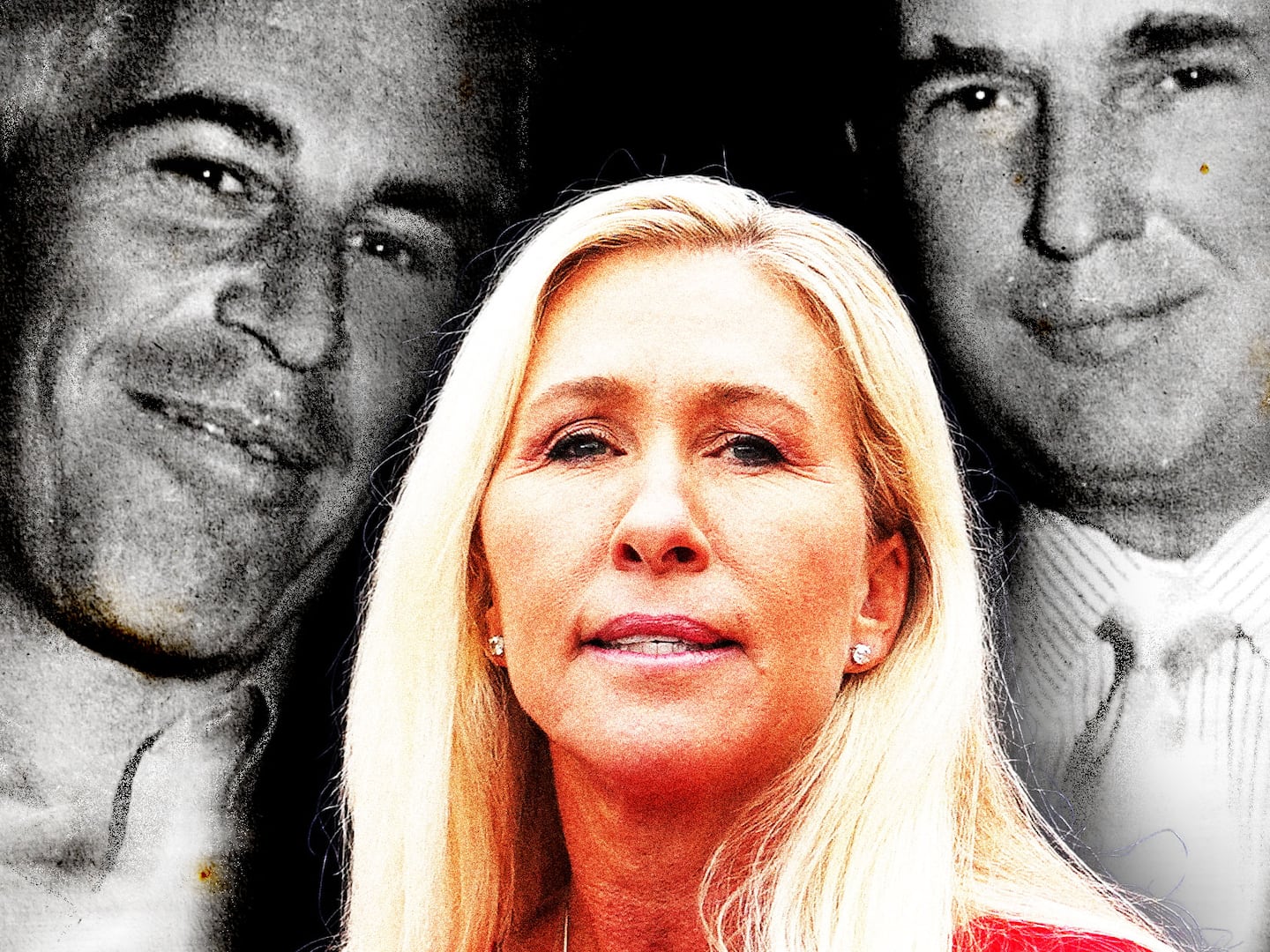True crime is quickly replacing reality TV as viewers’ guiltiest pleasure. It’s hard to say exactly why we revisit gruesome murders or grisly assaults, worrying at old scabs with grim voiceovers and crime-scene photographs, digging for blood and answers. And if we were to seriously examine our collective interest in all of this, we would probably unearth something ugly. After all, it’s not attractive to take too much interest in a violence that doesn’t belong to you—even worse to be entertained by the drama and pathos of the retelling.
Still, there’s value in taking a deep, hard look at the corpses that capture our attention, and asking ourselves why that is—and whether our true-crime consumption is a valid way to bear witness, or just another form of exploitation. In this current golden age of true crime, some creators are actively attempting to act as an intervention, turning a new page on the genre’s seedy past. There’s the podcast My Favorite Murder, whose female hosts take issue with tired old tropes; or Sharp Objects, the new HBO limited series that promises all the thrills of a serial-killer show, but with an added layer of self-awareness, interrogating our fascination with the tragic deaths of young girls and the stories we get to tell about them in their absence.
Serial Killer with Piers Morgan, an ignorant new Oxygen series premiering July 16, is clumsily navigating this complicated and evolving terrain. Like the world’s cheesiest wannabe detective, Morgan combines a talent for cliché with zero interrogation skills, resulting in a series of serial killer interviews that are at once sappy and shockingly ineffective.
Piers Morgan is known for many things, from his sick Kim Kardashian burns to his overall terrible opinions. But overt misogyny and Trump sycophancy aren’t the only traits that should disqualify Morgan from the role of serious journalist—there’s also his journalism. As The Daily Beast previously reported, Morgan’s career has been marked with a series of public shamings and scandals, including accusations of celebrity phone-hacking. In 2004, he was fired from the Daily Mirror “after publishing fake photos that purported to show British troops torturing an Iraqi prisoner—and, according to The Guardian, refusing to apologize for the error.” Morgan went on to pivot to reality TV, eventually winning Trump’s Celebrity Apprentice and later resurfacing as a guest judge on the show. It’s not an impressive resume, but apparently it was enough to get Morgan in the room with a few convicted killers and land him an Oxygen slot.
In the first two episodes of the series, Morgan’s interviews with the accused men fail to yield the confessions that he longs for. Strangely enough, neither of these convicted murderers want to say that they’re guilty on camera, or peel off their masks to reveal the true face of a sick, unabashed killer. Morgan’s main technique, which he somehow thought would nudge the accused towards these desired outcomes, is to show them pictures of their alleged victims. When that doesn’t work, he vacillates between expressing shock that a person could do such horrible things, and confusion that the killer’s story fails to match up with law enforcement’s. If Morgan is playing dumb, he’s doing it very well—but to what end, and for whose benefit?
The “serial killers” still don’t like Morgan’s line of questioning, harmless as it is, and repeatedly threaten to storm off. Really, they should be grateful for such a softball interview. As Morgan himself reassures one man, accused of brutally strangling a slew of women, “this is your chance just to have your say.” Somehow, Morgan sitting in a room with an accused serial killer, talking man-to-man with him over a folder full of dead girls’ photos, is meant to be taken as a reckoning, as justice. Oftentimes, these women are reduced to the details of their murder, or just their names, while the accused killer settles in across from Morgan to share his life story.
The structure of these episodes is unimaginative—Piers goes to prison to talk to a murderer, Piers goes to the crime scene, Piers goes on long walks with the detective who worked the case, Piers expresses genuine shock when the murderers don’t immediately want to confess their crimes in gruesome detail. This paint-by-numbers approach makes the trotting out of family members feel even grosser. If the conversations with the convicts are, counterintuitively, the most boring ingredient in the recipe, it’s the cameos from relatives of the victims that are the most manipulative. Instead of actually honoring the lives of the murdered women, using this platform to memorialize what they did or who they were, Morgan goes to visit grieving siblings and children, asking them corny questions that serve his narrative, not theirs. At one point, he mournfully intones, “Their loved ones may have died for no other reason than simply the thrill of the kill.”
Imagine being summoned to talk about the worst thing that ever happened to you, only to have your story cut down for tears and tactically inserted into an hour of television that spends the majority of its time making small talk with your loved one’s killer.
In his one-on-ones with the incarcerated men, Morgan somehow manages to come across worse than the accused murderers he’s questioning. During the second episode, he tries to pull one on the Kansas City strangler, who murdered sex workers, with this gem: “Your sister ended up, sadly, as a prostitute…did you feel sad about that?” As if Morgan’s bias wasn’t already showing, the episode privileges the story of a victim who, unlike the majority of the strangler’s targets, didn’t engage in sex work—because she’s more sympathetic? More tragic?
If Piers Morgan is going to put in all of the effort of flying to America to pace in front of a set prop of “clues” pasted onto a map, why is he limiting himself to essentially reading out Wikipedia entries? Aside from various detectives, he barely even consults with experts—people who might have actual interesting things to say about these men’s psyches, and could have probably squeezed way more scintillating sound bites out of the killers. Instead, he keeps playing the tired old greatest hits of true crime. Serious men discuss dead women on long wilderness walks, dedicated detectives marvel at their cunning and charismatic killers, and the camera pans over haunted woods and tombstones. The first hour-long episode of the series ends with a sequence that’s bound to be repeated: a daughter mourns the mother she barely knew, then weeps silently at her grave. Maybe a show that seeks catharsis for dead women and their loved ones could start by giving women some more room to speak.






